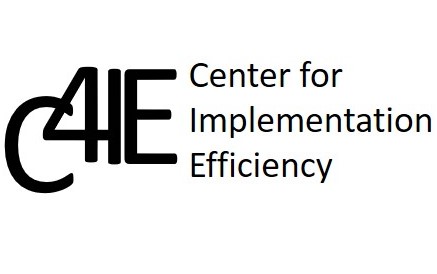Tools for efficient implementation:
Medical audit tool to strengthen health system, improve quality, and lower costs in S Korea, Nigeria, Philippines:
http://www.jointlearningnetwork.org/news/a-new-toolkit-for-medical-audit-practitioners-ensuring-quality-across-healt
http://www.jointlearningnetwork.org/news/medical-audits-collaborative-tackles-common-challenges-to-improve-quality-o
http://www.jointlearningnetwork.org/news/impact-of-medical-audits-learnings-on-nigerias-health-system
New tool to track provider payment for more efficient accounting of revenues and accountability:
http://www.jointlearningnetwork.org/news/a-new-monitoring-toolkit-empowers-countries-to-track-provider-payment-system
Efficient fish farming in Bihar, India:
https://www.weforum.org/agenda/2018/02/a-fish-farming-social-enterprise-wants-to-lead-a-blue-revolution?utm_content=buffera7acf&utm_medium=social&utm_source=twitter.com&utm_campaign=buffer
How lasers and robo-feeders changing fish farming:http://www.bbc.com/news/business-43032542?ocid=socialflow_twitter
Uganda: reducing breast cancer deaths:http://www.ideas4action.org/behind-the-proposal-gifted-hands-network/
A 1999 study of Mexico’s Ministry of Health family planning program indicated that the program was spending $29 per person per year on contraceptive services. The study recommended that the system can be made more efficient by increasing more contraceptive protection at each visit (i.e. provide more condoms or pills), increasing the proportion of time provider spends with the clients during each visit, thus reducing the number of visits, and increasing the length of provider’s workday. These measures would allow the Ministry to provide services to more people without increasing costs.
(http://www.guttmacher.org/pubs/journals/2511999.html)
--------------------------------------------------------------------------------------------------------------------
Efficiency gains through smarter transportation and pooled procurement:
http://www.pepfar.gov/documents/organization/158512.pdf
-------------------------------------------------------------------------------------------------------------------
Long lasting insectide treated bed nets for Malaria:
Results for Development (R4D) outlined certain market dynamics strategies that will save the global community $600 million over 5 years and this saving can finance bed nets to protect additional 300million people.
--------------------------------------------------------------------------------------------------------------------------------------------
Anti-retroviral drugs for HIV/AIDS patients:
By improving selection of existing ARVs, we can save over $85million over 5 years and up to $200 million through accelerated introduction of potential new first-line ARVs, with no reduction – but potential increases – in clinical benefits. The report from R4D has other suggestions for efficiencies and reduction in total costs.(http://resultsfordevelopment.org/sites/resultsfordevelopment.org/)
--------------------------------------------------------------------------------------------------------------------------------------------
Comparative Cost-Effectiveness Analysis to Inform Policy in Developing Countries:
A General Framework with Applications for Education: Iqbal Dhaliwal, Esther Duflo, Rachel Glennerster, Caitlin Tulloch1; Abdul Latif Jameel Poverty Action Lab (J-PAL), MIT
This is a paper that discusses ‘how comparative cost-effectiveness analyses can help inform policy in developing countries and the underlying methodological assumptions necessary for performing this kind of analysis using data gathered as part of rigorous impact evaluations. This paper does not suggest a single set of “correct” assumptions, because the assumptions adopted in a cost-effectiveness analysis should reflect the perspective of the intended user.’ The paper also defines cost-effective analysis and why it is an important tool. ‘Cost-effectiveness analysis, in the simplest terms, calculates the ratio of the amount of “effect” a program achieves for a given amount of cost incurred, or conversely the amount of cost required to achieve a given impact. For program evaluation, this means measuring the impact of a program in achieving a given policy goal (for example, the extra years of schooling induced) against the cost of the program. This ratio, when calculated for a range of alternative programs addressing the same policy goal, conveys the relative impacts and costs of these programs in an easy and intuitive way.” It is important to quantify program impacts in a standard manner and also decide which costs should be included. See the link for the full report: http://www.povertyactionlab.org/publication/cost-effectiveness
-------------------------------------------------------------------------------
http://www.cgdev.org/files/1426120_file_Wilson_Aizenman_ValueforMoney_FINAL.pdf
Efficiency measures in Malaria programs
Better drug use, greater efficiency, Amanda Glassman's blog in Center for Global Development. Responsible use of medicines can bring more efficiencies, as indicated by IMS Institute study.
http://blogs.cgdev.org/globalhealth/2012/11/better-drug-use-greater-efficiency.php
-----------------------------------------------------------------------------------------------------------
disrupting construction industry to reduce waste and inefficiencies:
https://www.fastcompany.com/40566407/the-10-trillion-opportunity-to-disrupt-construction;
Name of company: Katerra
